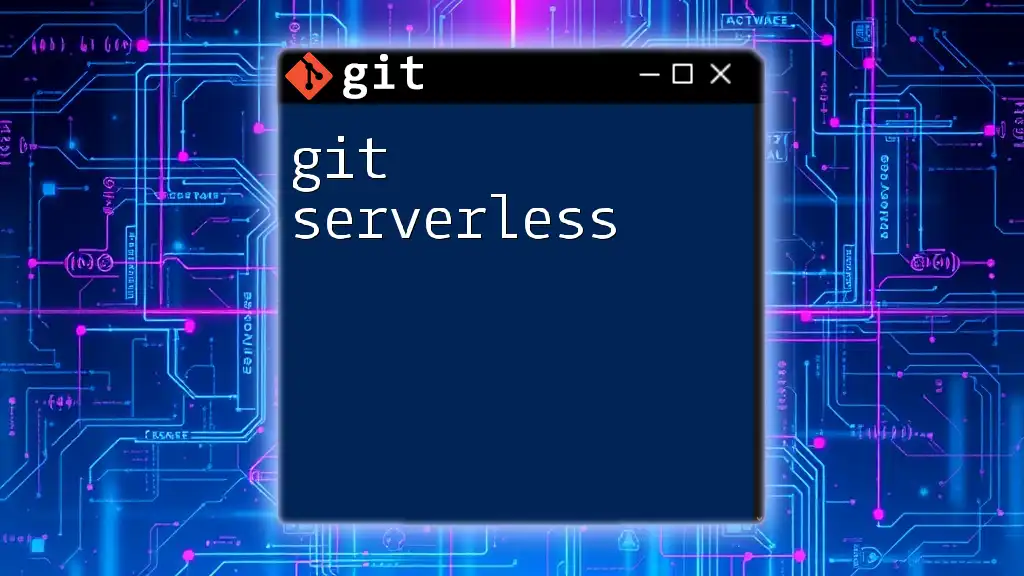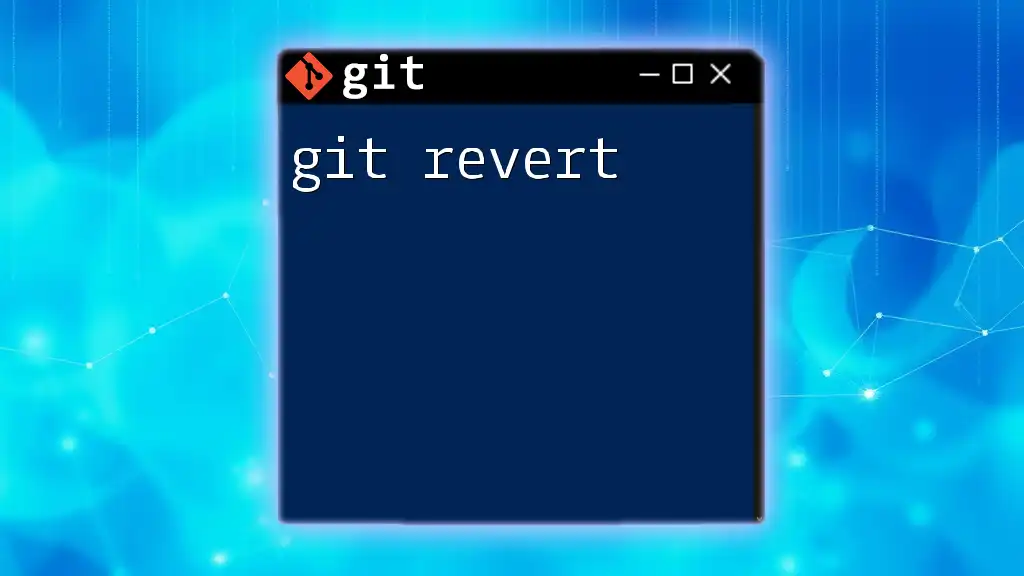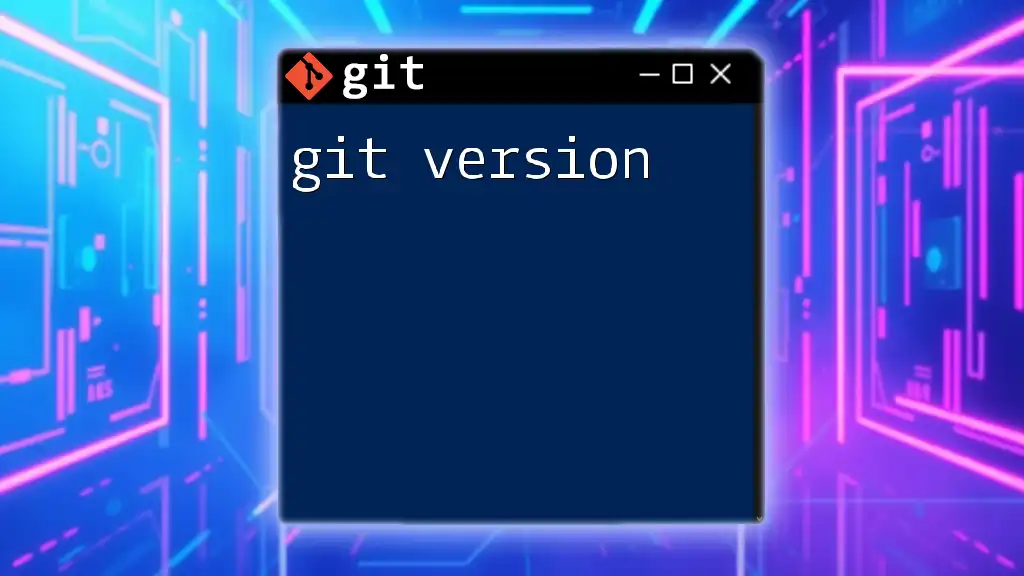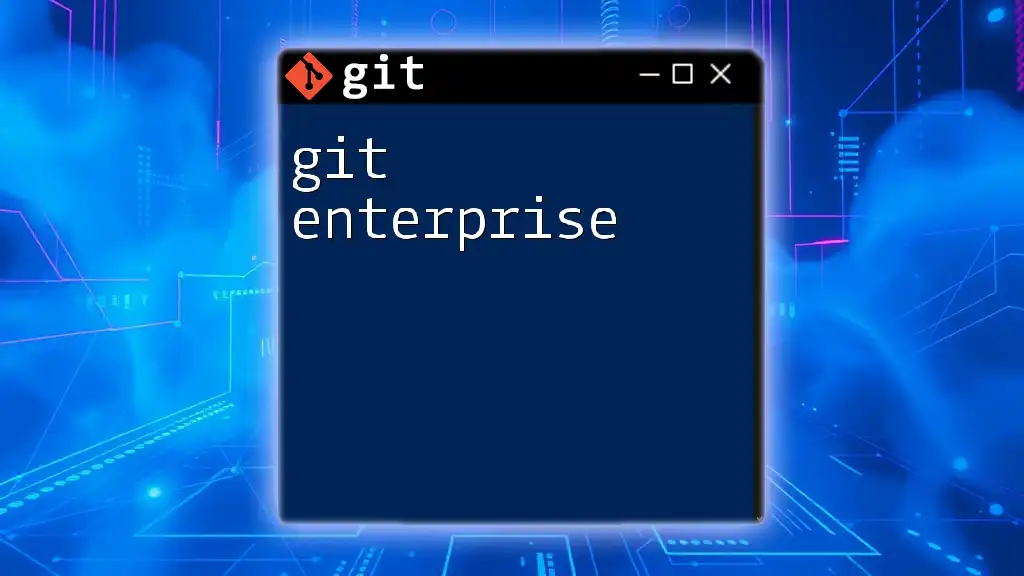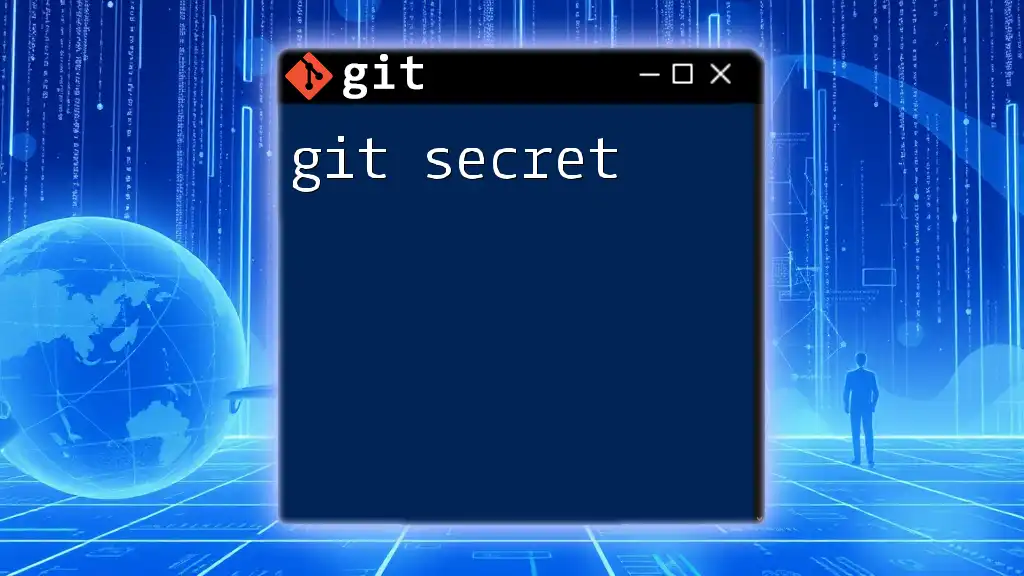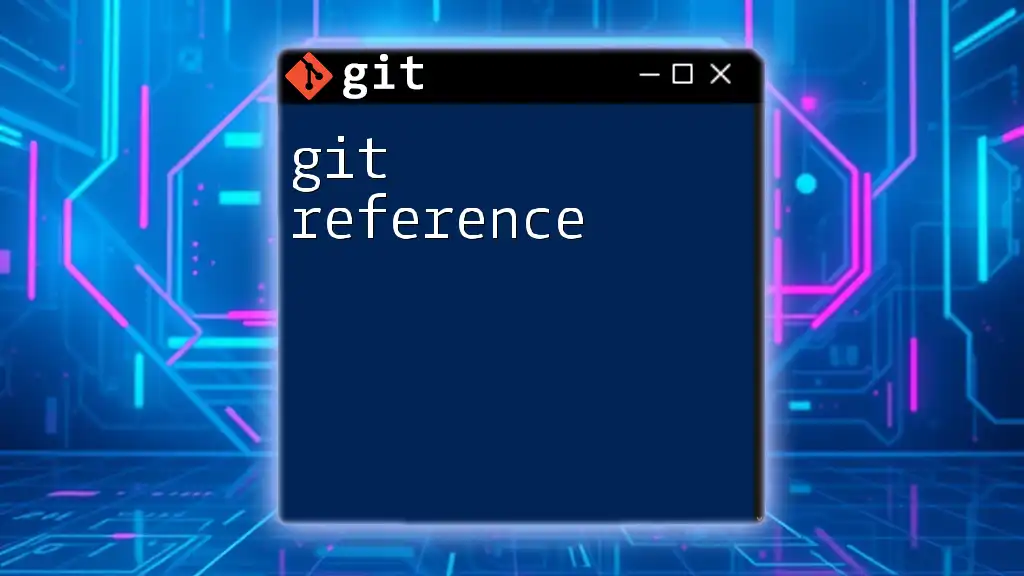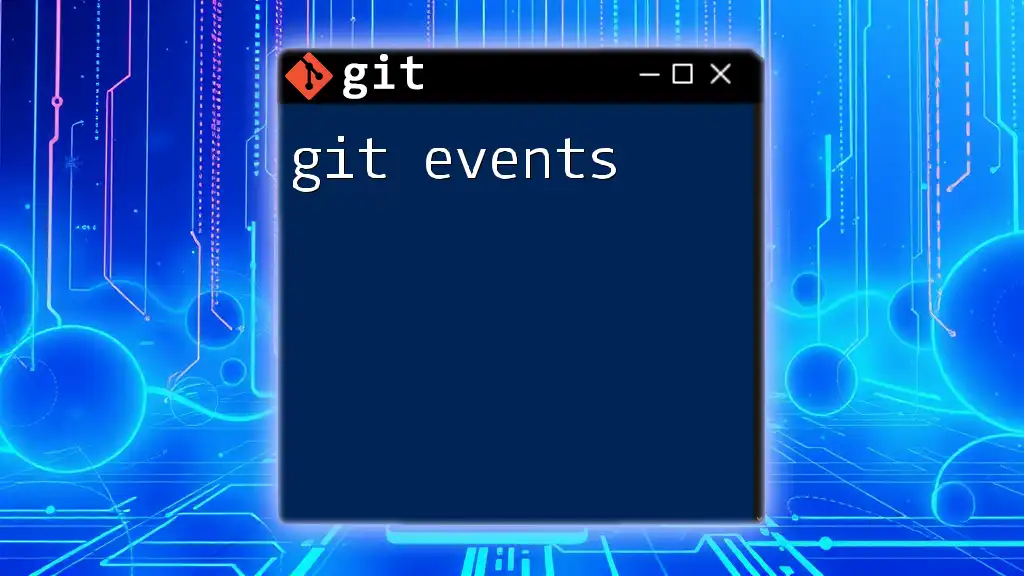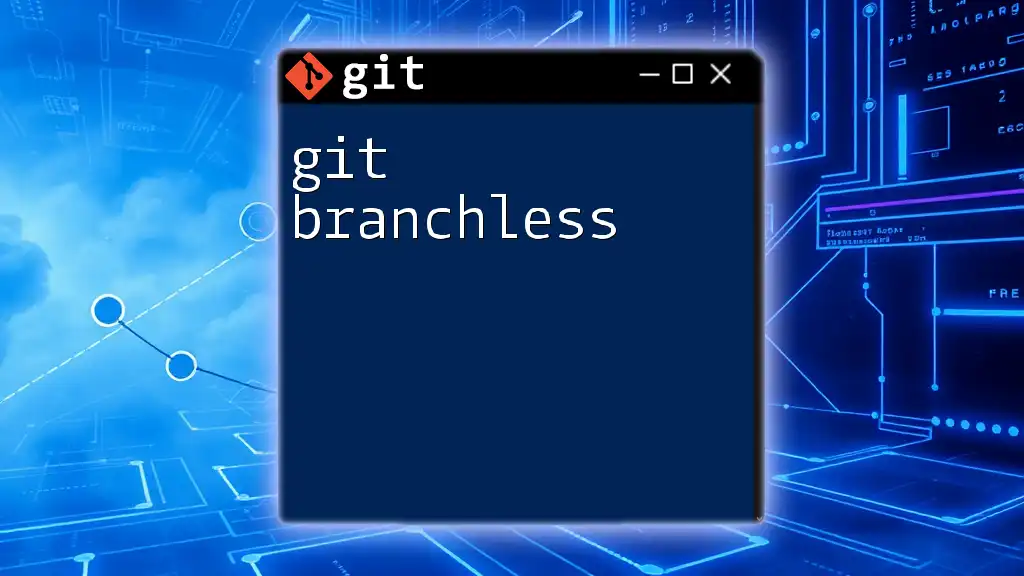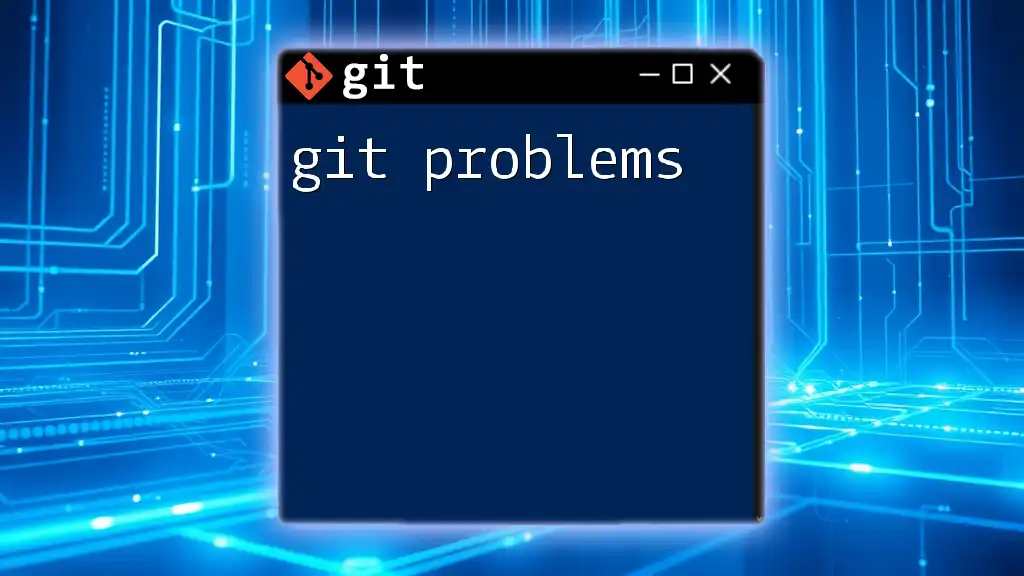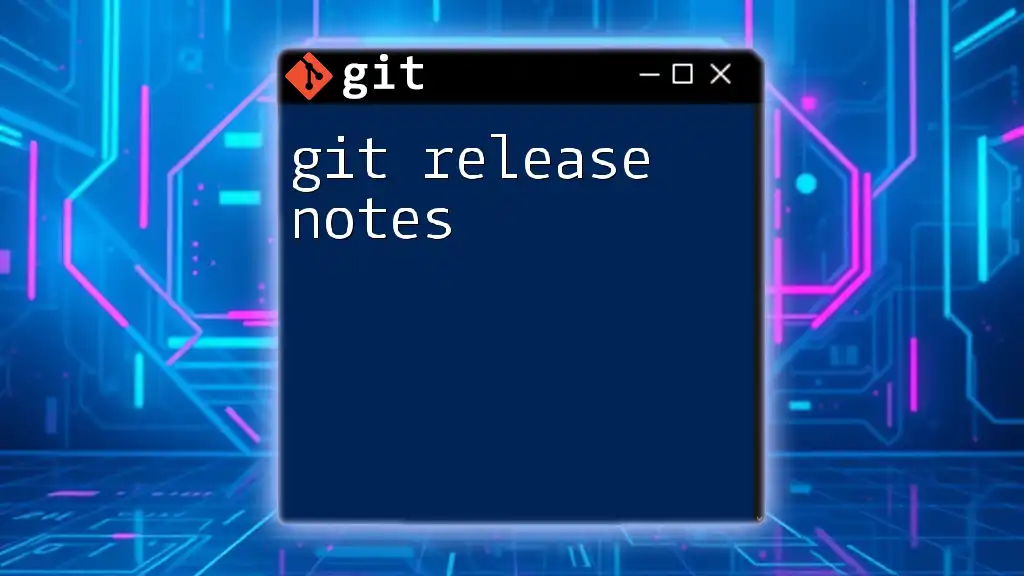"Git serverless refers to using Git in a cloud environment without managing the underlying server infrastructure, often utilizing platform services like GitHub, GitLab, or Bitbucket for version control."
Here's a simple command to clone a repository from GitHub:
git clone https://github.com/username/repository.git
Understanding Serverless Architecture
What is Serverless Computing?
Serverless computing is a cloud-based model that abstracts server management responsibilities from developers. In a serverless architecture, the cloud provider dynamically manages the allocation of resources. This model allows developers to focus on writing code rather than managing infrastructure. Key characteristics of serverless computing include:
- Event-driven execution: Functions execute in response to events, such as API requests or file uploads.
- Automatic scaling: Resources are scaled automatically according to demand.
- Pay-as-you-go pricing: Users are charged based only on the resources they consume.
The benefits of adopting serverless computing are significant. It presents a cost-effective option because developers only pay when their functions are invoked. Moreover, it provides scalability, automatically accommodating fluctuating workloads. This leads to faster deployment times, allowing development teams to push updates swiftly.
How Serverless Relates to Version Control
Traditional Git setups often require a hosting server or service, such as GitHub or Bitbucket, to manage repositories. In contrast, serverless Git reduces the need for dedicated server infrastructure, enabling developers to leverage cloud functions and services for version control and deployment processes. This shift allows for improved integration with CI/CD pipelines, expediting the transition from code to production.
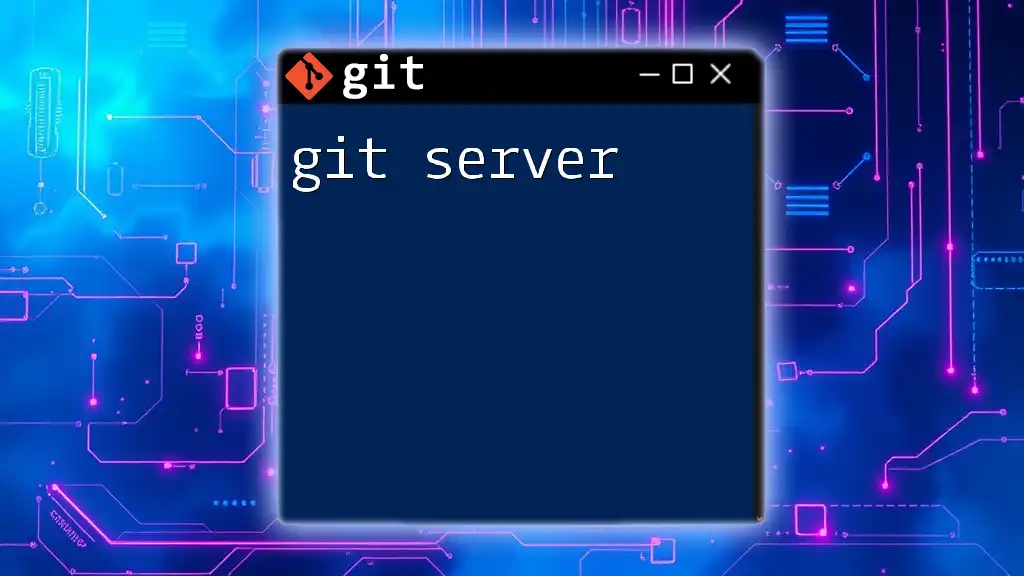
Git Serverless Overview
What is Git Serverless?
Git serverless refers to the integration of Git version control with serverless architecture. It enables developers to deploy code changes directly from a Git repository to a serverless platform without manual intervention in server management. This setup leverages cloud services to handle tasks that traditional Git repositories might require physical servers for.
Core services that contribute to enabling Git in a serverless environment often include Continuous Integration (CI) tools, API gateways, and cloud function frameworks.
Popular Serverless Platforms Supporting Git
AWS Lambda
AWS Lambda is a compute service that runs code in response to events and automatically manages the computing resources required.
To automate deployments via Git in AWS Lambda, developers can use the Serverless Framework. An example use case includes deploying a REST API that triggers a Lambda function whenever a user requests a resource.
Azure Functions
Azure Functions provides a serverless compute experience, allowing developers to execute code in response to events without worrying about the underlying infrastructure.
For instance, Azure Functions can listen to a Git repository, triggering builds and deployments automatically when changes are pushed to specified branches.
Google Cloud Functions
Google Cloud Functions allows developers to run snippets of code in response to events while automatically managing permissions and scaling.
Integrating with Firebase and Git can simplify the deployment of back-end services. For instance, a cloud function can be set up to trigger when database entries are updated, automating the process of deploying the latest changes from a Git repository.
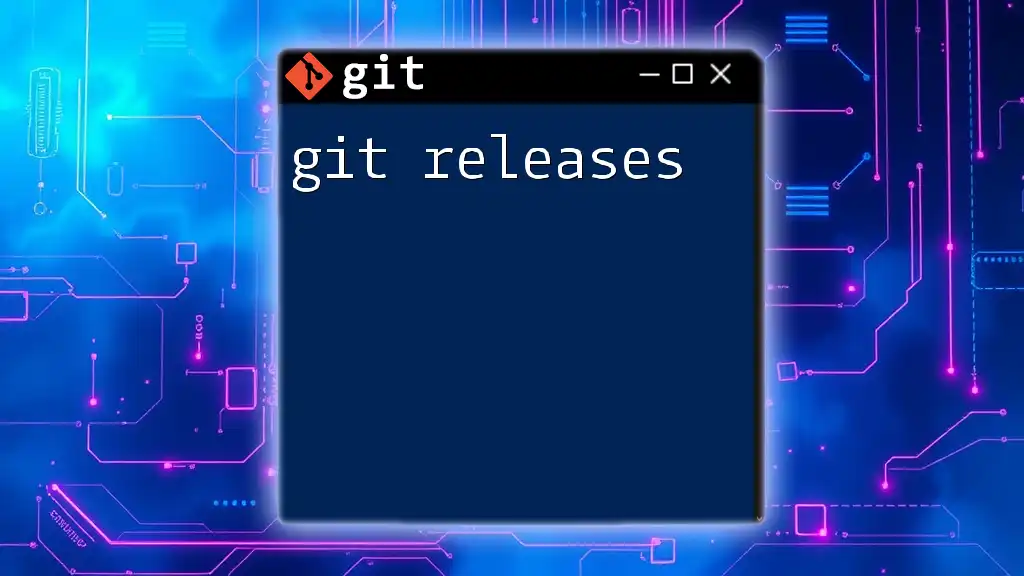
Setting Up a Serverless Git Environment
Prerequisites
Before diving into configuring a serverless Git environment, it’s crucial to have a few tools on hand. You will need:
- Git: For managing your code and versions.
- Cloud Provider Account: Create an account on AWS, Azure, or Google Cloud to access serverless capabilities.
- CLI Tools: Ensure you have the command line interface tools specific to your chosen cloud provider installed.
Step-by-Step Guide to Setting Up
Creating Your Git Repository
Start by initializing a new Git repository. From your terminal, run:
git init my-serverless-repo
cd my-serverless-repo
This command creates a new directory and sets it up as a Git repository.
Configuring Your Cloud Environment
Each cloud provider has its own setup instructions. For example, to set up AWS with the Serverless Framework, follow these steps:
-
Install the Serverless Framework:
npm install -g serverless -
Create a new Serverless project:
serverless create --template aws-nodejs --path my-service cd my-service -
Configure your `serverless.yml` file to set up your functions and resources.
Deploying Your Code Serverlessly
To enable Git integration with CI/CD tools, consider using GitHub Actions or GitLab CI/CD. Below is an example YAML configuration for deploying to AWS Lambda:
name: Deploy to AWS Lambda
on:
push:
branches:
- main
jobs:
build:
runs-on: ubuntu-latest
steps:
- name: Checkout code
uses: actions/checkout@v2
- name: Deploy to AWS Lambda
run: |
npm install
serverless deploy
This YAML script ensures that on every push to the main branch, the code is automatically deployed to AWS.
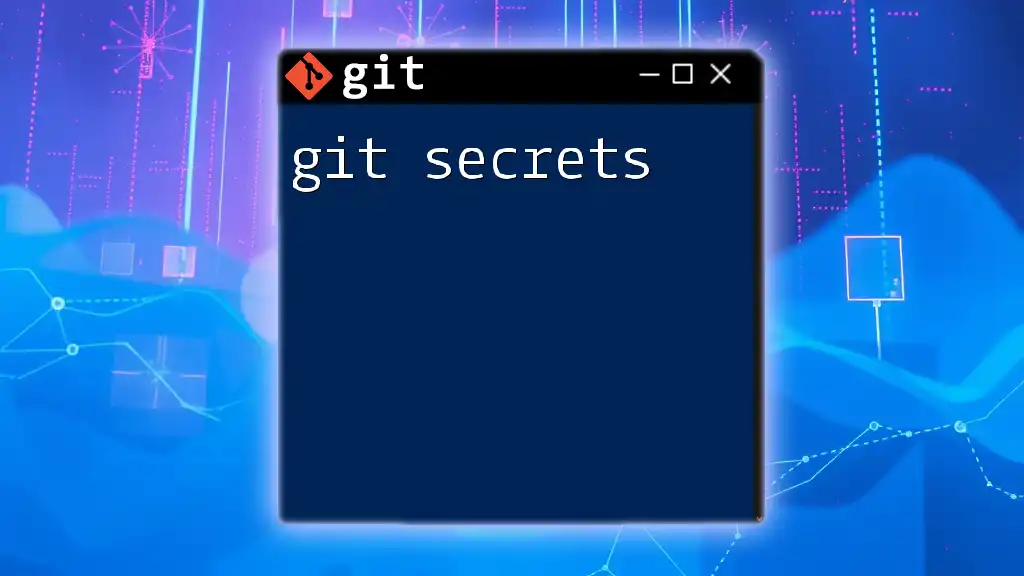
Best Practices for Using Git in a Serverless Context
Organizing Your Codebase
Keeping your codebase structured is vital for maintaining clarity and efficiency in serverless functions. Consider the following organization tips:
- Folder Structure Recommendations: Separate functions by purpose, placing them in distinct folders. It looks cleaner and allows for easier navigation.
- Versioning Your Serverless Functions: Use semantic versioning (e.g., v1.0.0) to handle updates, ensuring that breaking changes are clearly communicated to users.
Managing Secrets and Configuration
Security is paramount in serverless applications. It's crucial to manage sensitive data carefully. Utilizing environment variables is essential; configure them in your cloud provider settings.
Consider tools designed specifically for secret management, such as AWS Secrets Manager or Azure Key Vault, which allow you to control access to your secrets efficiently.
Designing for Scalability and Performance
Optimize your serverless applications by strategically designing their architecture. Key considerations include:
- Choosing the Right Trigger: Select appropriate events that will trigger your functions. HTTP requests may be best for APIs, while file uploads may suit file processing functions.
- Minimizing Cold Starts: Cold starts can delay function execution; one method to mitigate this is by using a scheduled invocation to "warm up" your functions periodically.
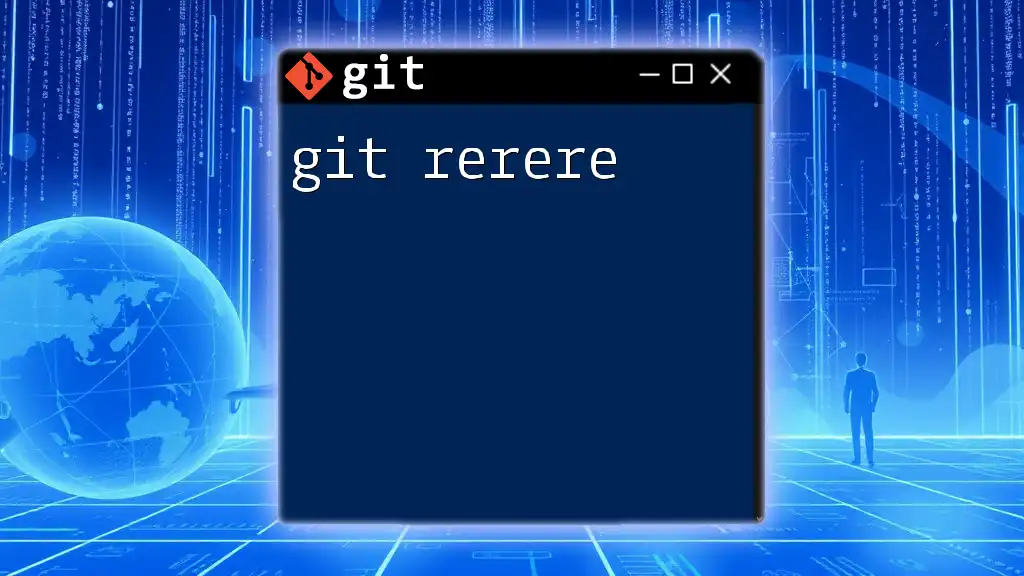
Challenges and Considerations
Limitations of Serverless Git Environments
While serverless Git offers many advantages, it’s important to be aware of certain limitations. For example, cold start issues can affect performance, leading to longer wait times when functions are invoked after being idle. Additionally, many serverless platforms enforce timeouts on function executions, so it’s crucial to design your functions with these constraints in mind.
Security Implications
Security remains a top concern in serverless computing. To bolster security, follow these best practices:
- IAM Roles and Permissions Management: Ensure that your serverless functions have the least privilege necessary to accomplish their tasks.
- Regularly Audit Functions and Integrations: Keep an eye on dependencies and functions to reduce vulnerabilities.
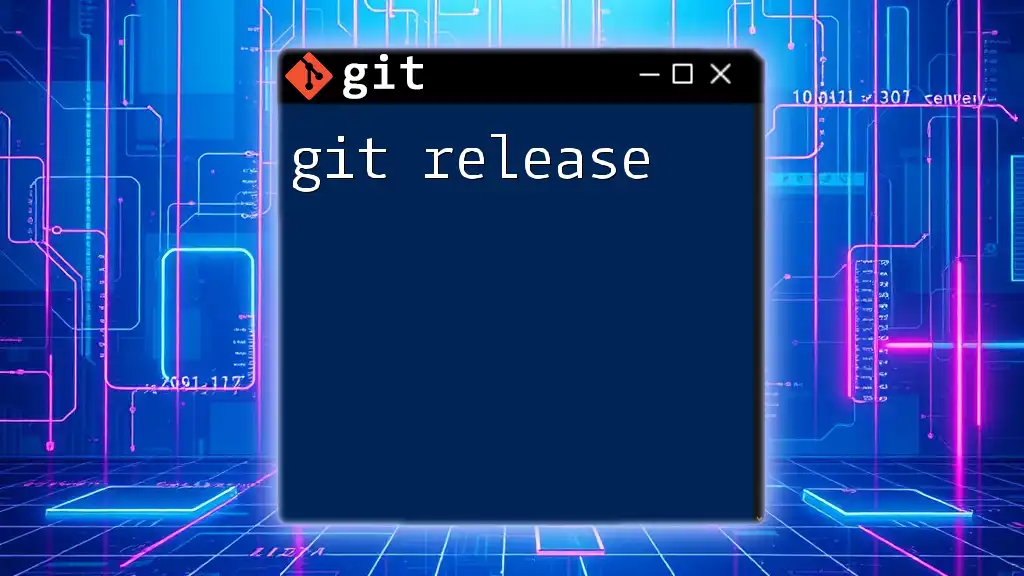
Real-World Use Cases
Case Study: Successful Implementation of Serverless Git
An excellent example of successfully implementing serverless Git is Company ABC, which transitioned its deployment process to a serverless framework. The benefits included:
- Faster deployment times thanks to automatic triggers from their Git repository.
- Reduced infrastructure costs since they no longer maintained dedicated servers.
- Enhanced scalability allowing them to handle spikes in traffic seamlessly.
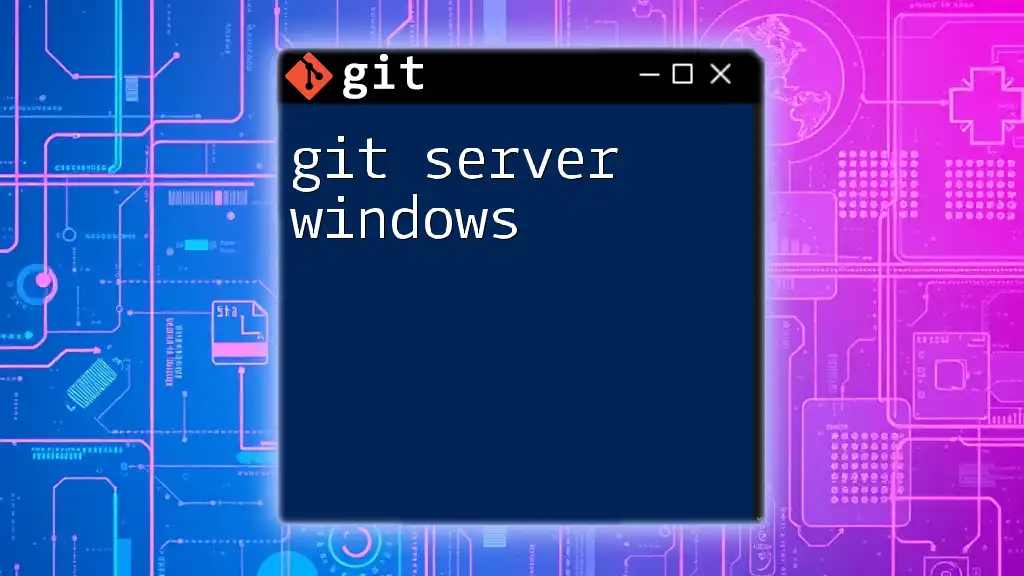
Conclusion
The convergence of Git and serverless architecture opens up remarkable opportunities for developers seeking efficiency and scalability. By leveraging serverless platforms and integrating Git into your workflows, you can automate deployments, reduce costs, and streamline your development process. With the insights and strategies outlined in this article, you are now equipped to explore the world of git serverless, enabling you to implement modern development practices that align with today’s fast-paced technological landscape.
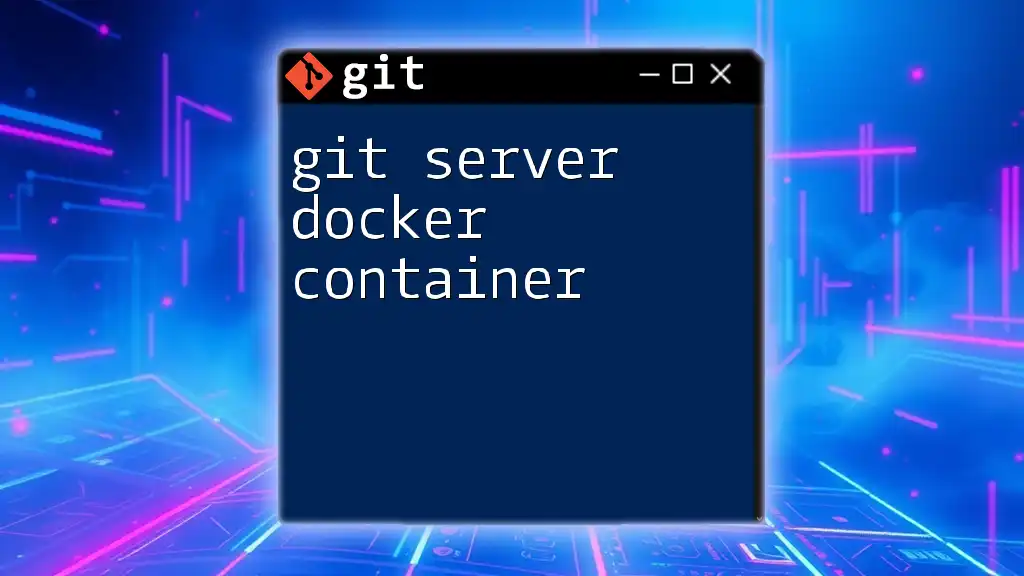
FAQs
Common Questions About Git Serverless
What are the cost implications of moving to serverless?
Transitioning to a serverless model can be cost-effective due to its pay-as-you-go pricing structure. However, it’s vital to assess your usage patterns to optimize costs.
How does error handling work in a serverless Git environment?
Error handling can be managed within your serverless functions by implementing logging and monitoring services offered by your cloud provider, allowing for quick resolution of issues.
Is it possible to use on-premises Git with serverless functions?
Yes, you can still maintain an on-premises Git repository while deploying to serverless functions. Some integrations allow on-prem solutions to communicate with cloud-based serverless architecture.

